To truly understand a place, you must learn its history, customs and traditions, namely the foundation of what it is today. A first step towards learning more about what is Samothraki should be a visit to the Folk Museum located in Chora, the islands' capital.
The museum is neighboring the Church of the Assumption of Mary and resides in a beautiful 19th-century traditional stone house. The building was donated to the community in 1952 by Dimitros Asdranias, an American citizen of Greek origin, in loving memory of his wife, Anna. It was home to the first middle school on the island and, during the construction of the hospital in Chora, it also served as a medical point.
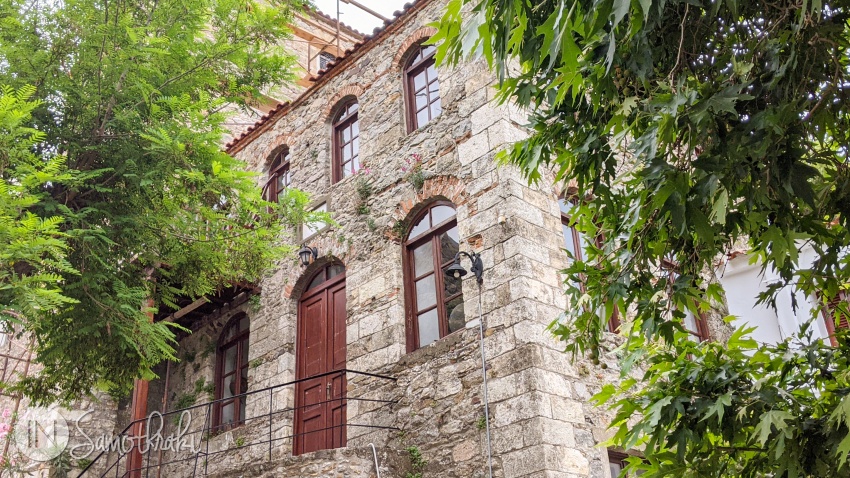
The Folk Museum first opened its doors to visitors in 1985 with support from the Cultural Association of Samothraki, the Municipality and many of the residents of the island. Starting in the 70s, people donated various objects that speak of a long-gone way of life and that are exhibited to this day.
The first floor is dedicated to traditional trades and crafts: raising animals, agriculture and weaving. You can see farming tools, objects used by shepherds and animal breeders (these are called kehagiades), tools for wool processing and a loom.
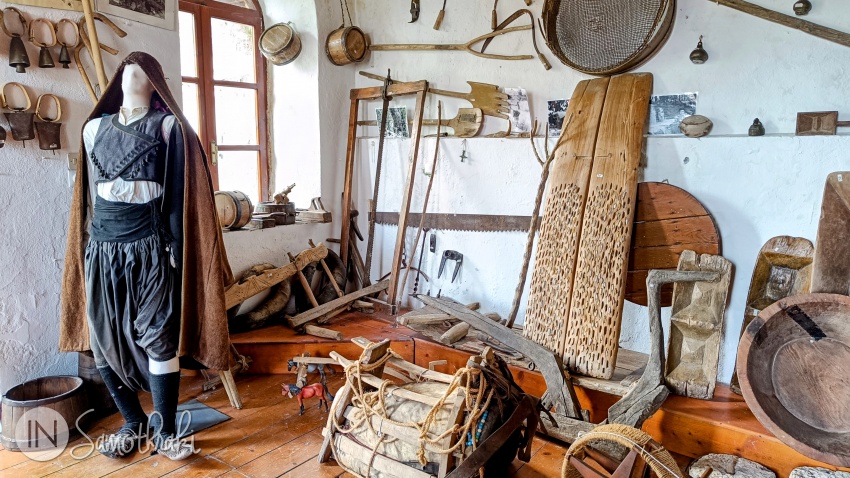
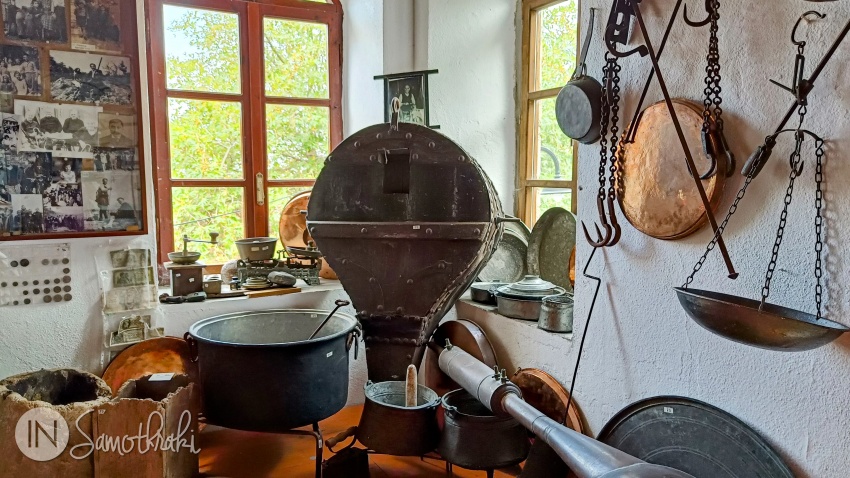
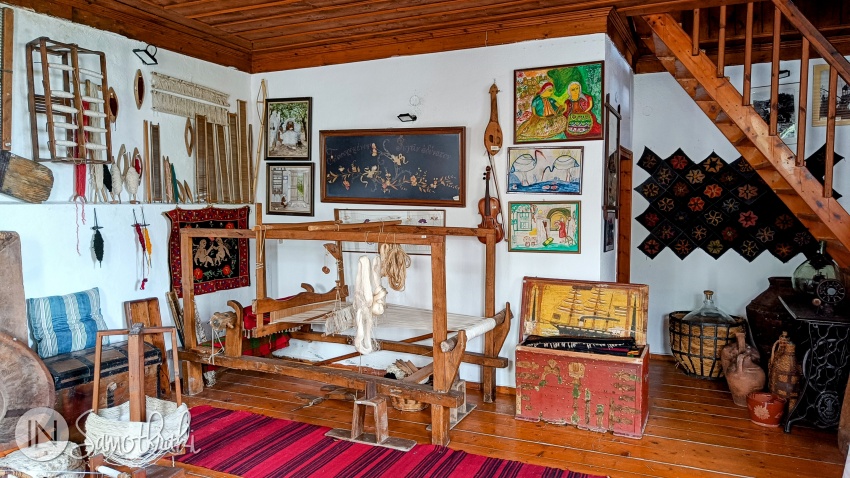
On the top floor, there's a reconstruction of a typical residence. Old elements mix with the urban influence that began at the end of the 19th century and the start of the 20th century.
As you go up the stairs, the first thing to greet you is the kitchen. It was the most important area for the family, as most of the day was spent there. The hearth was used for heating and cooking. Over it, cups and dishes are placed on shelves covered by laced cloth. Their role is both practical and decorative. In the middle, the family would sit cross-legged and eat on a short wooden table (sofras).
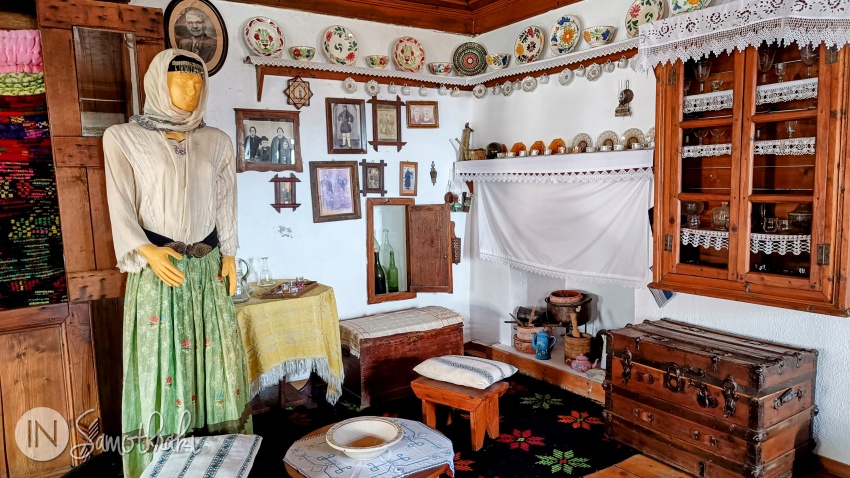
Further, to the left one can see a wooden wardrobe (misandra), a staple of Samothracian homes used for storing dishes, food and bed linen. The latter were folded in such a way that their patterns and beauty (a sign of pride and an indicator of social status) were visible without opening the doors. A water jug rests on its support to the left of the wardrobe, while over the door that leads outside, there is a shelf for bread and a cupboard with painted plates. On the floor, by the cabinet with the mirror, there's a recipient for heating the house.

Next, on the wall facing the street, there's a sitting room, present only in wealthy households. It consists of a sofa with decorative pillows, a coffee table and a linen chest.
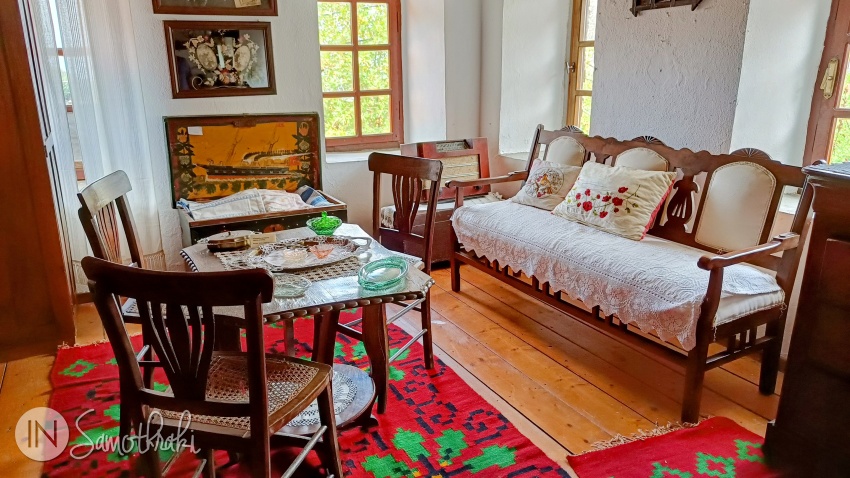
If you turn your eyes towards the stairs, you can see an iron bed from 1924, covered by a silk sheet. To the left, there's the first clock from the church of Chora. On the wall, there's a sculpted icon cabinet (eikonostasi) from the beginning of the 20th century that houses the icons from the old church. An oil lamp hangs in front of it. The icons on the table below date from the middle of the 19th century (1850-1870) and originate from the old church in Kamariotissa.
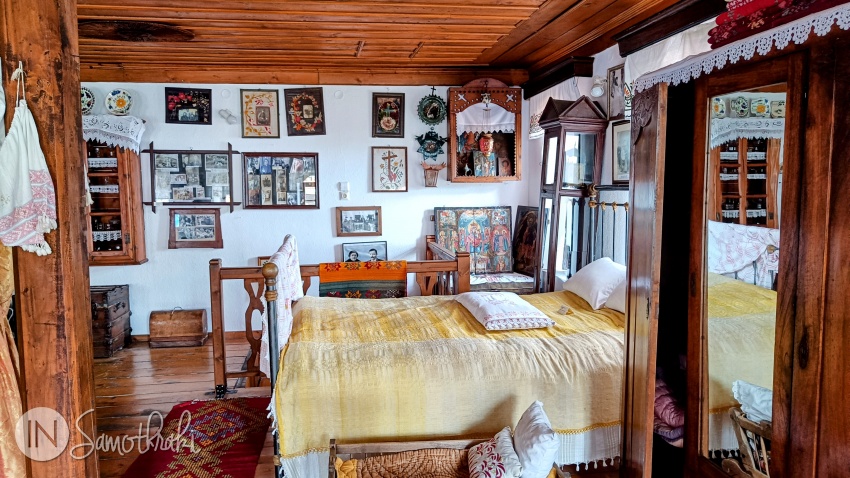
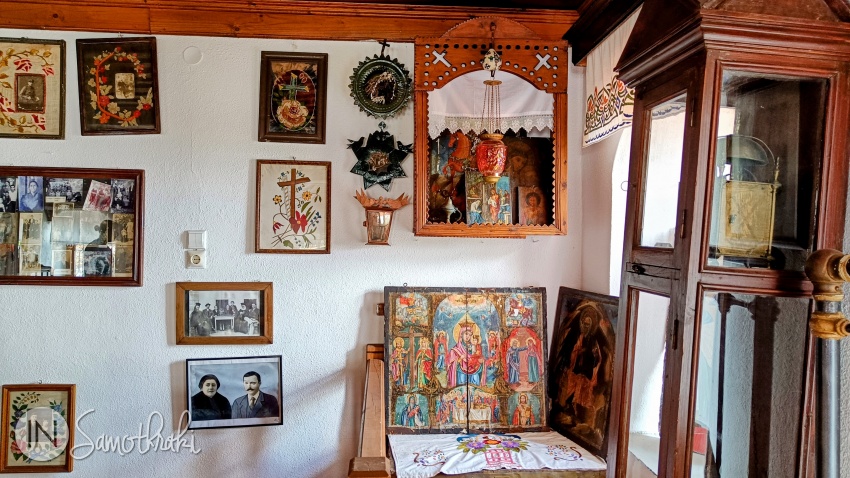
The traditional Samothracian clothes make for another notable exhibit. The women wore a simple blouse and skirt ensemble colored blue, red or green held together by a belt with silver buckles. The hair and the shoulders were covered by a plain scarf.
Depending on the season, the men would wear black baggy pants, a belt, socks, leather shoes, a collarless shirt, a dark-colored vest, a cape and a hat.
The mannequins in the middle of the room display the traditional wedding garments. The male vest is approximately 200 years old.
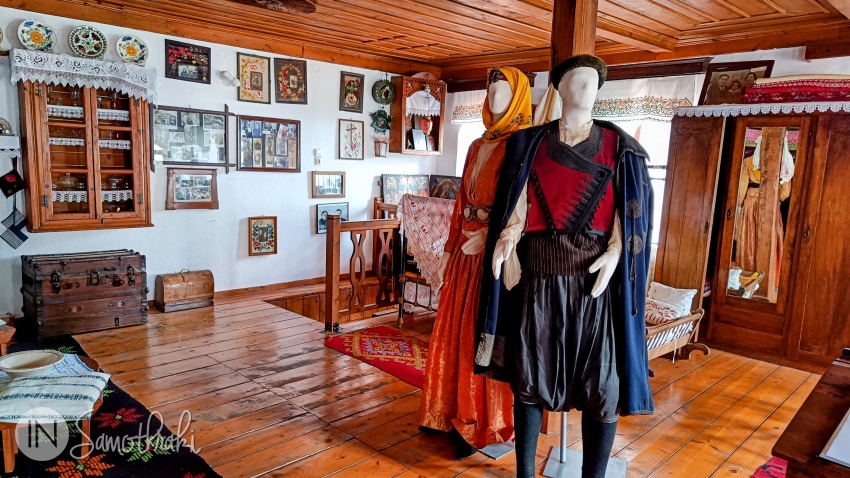
The old photos on the walls help the visitor imagine how life would have been in Samothraki.
The Folk Museum of Samothraki is typically open only in season, before noon and in the evening (the timetable changes from year to year). The price of an admission ticket is 1 € / person.
Phone: (+30) 255 104 1227
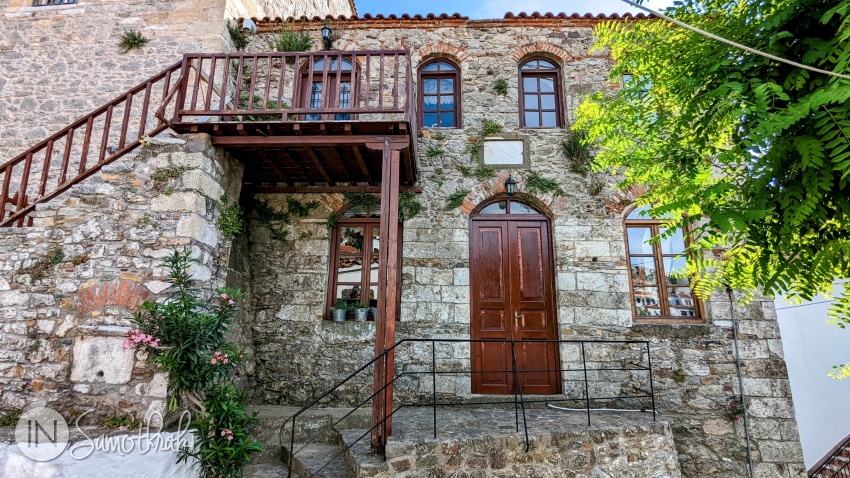
The collection of Maria Ververi
Also in Chora, during the summer, the private collection of Maria Ververi is open to visitors. Admission is free.
The house is located halfway through one of the streets that go towards the citadel. The street is parallel to the one with the traditional bakery and the To Gid' - The Goat Shop.
Phone: (+30) 697 303 6229


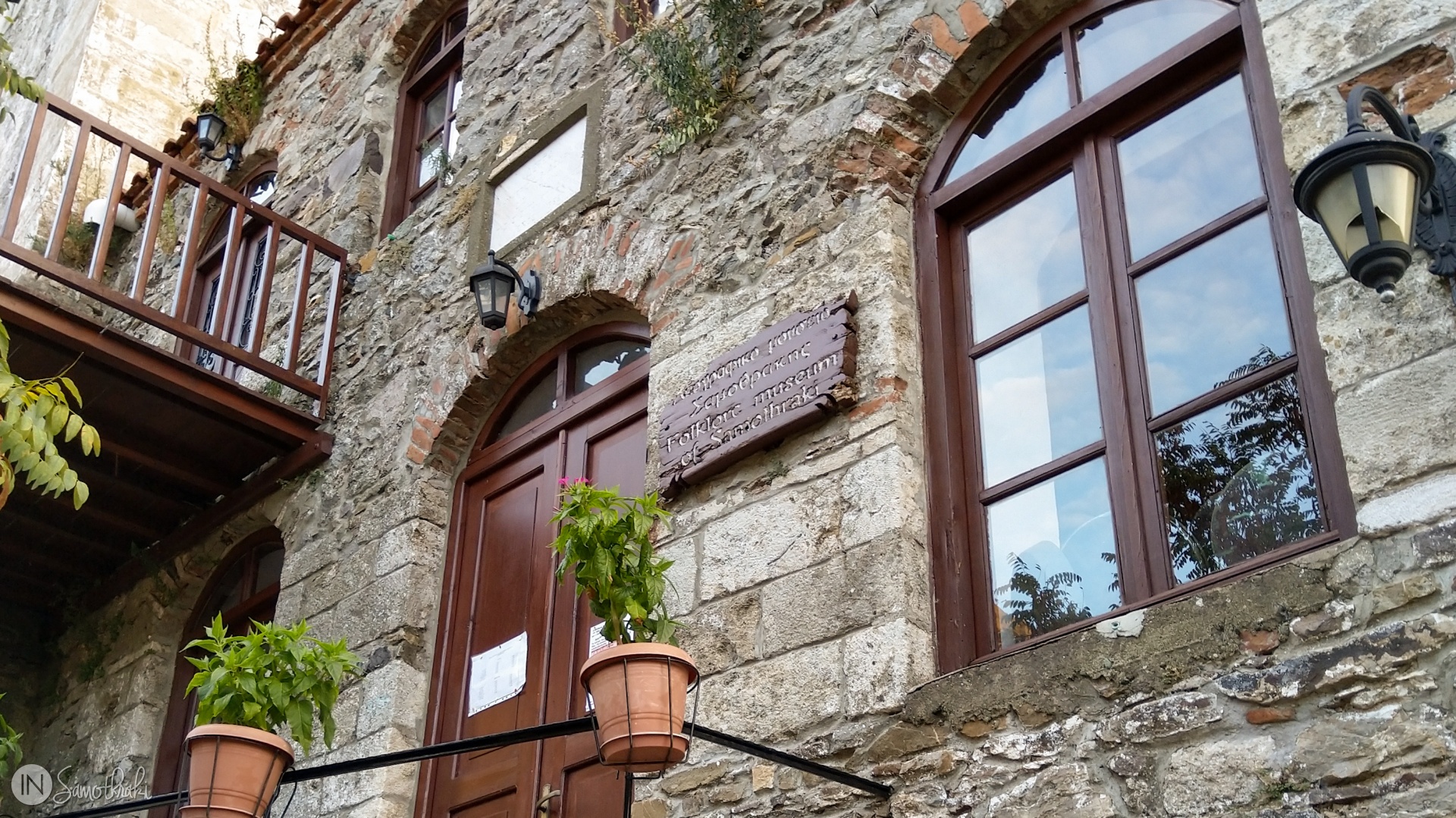
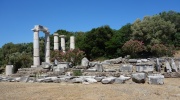 The Sanctuary of the Great Gods
The Sanctuary of the Great Gods
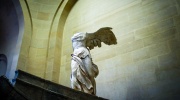 The Winged Victory of Samothraki
The Winged Victory of Samothraki
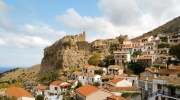 The Gateluzzi stronghold of Chora
The Gateluzzi stronghold of Chora
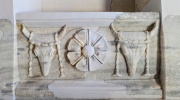 The Archaeological Museum of Samothraki
The Archaeological Museum of Samothraki
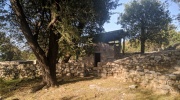 The ruins of the Monastery of Christ near Therma
The ruins of the Monastery of Christ near Therma
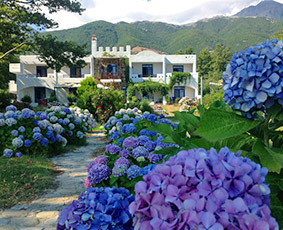
Have you been there?
Tell everyone about your experience!